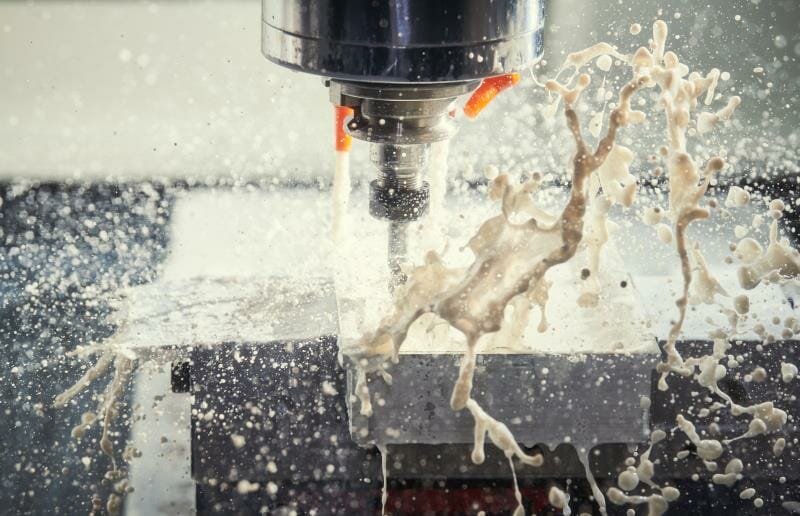There are many kinds of lathes, vertical lathes, horizontal lathes, ordinary lathes. Today this article will introduce you to the vertical lathe.
Vertical lathes are large mechanical equipment, which is suitable for processing large radial size and relatively small axial size, complex shape of large and heavy workpiece. Such as all kinds of disks, wheels and sets of workpiece cylinder, end face, conical surface, cylindrical hole, conical hole, etc. Additional devices can also be used for thread, surface, profile, milling and grinding. Generally can be divided into single column and double column.
CNC vertical lathe used for processing medium and small plate, cover parts of high strength cast iron base, column, has good stability and seismic performance of vertical structure, convenient clamping workpiece, small occupation area, the use of oil-water separation structure, so that the cooling water clean environmental protection lasting separated cooling water tank, easy to clean. Precision high stiffness elastomeric spindle structure, easy maintenance spindle sleeve symmetry; Suspension design, better eliminate the impact of thermal deformation on the processing accuracy of high-power AC spindle motor, enhance the stability of machine operation spindle imported advanced grease lubrication, fully enclosed, maintenance-free bed saddle. Column guide adopts heavy load linear rolling guide, good dynamic response performance, high precision and high retention with high quality 6-station vertical electric tool rest, high rigidity, rapid tool change, reliable centralized machine tool operation panel, make the operation more convenient; Fast X/Z axis adopts high-precision ball screw and screw special bearings, good precision retention, complete sealing protection, environmental protection and cleaning.
Vertical lathes are large mechanical equipment, applied to processing large radial size and relatively small axial size, complex shape of large and heavy workpiece. Such as all kinds of disks, wheels and sets of workpiece cylinder, end face, conical surface, cylindrical hole, conical hole, etc. Additional devices can also be used for thread, surface, profile, milling and grinding. In contrast, the workpiece is clamped on the inside of the clamping decoration of a horizontal lathe. The spindle axis of the vertical lathe is vertical layout, and the worktable is in the horizontal plane, so the clamping and alignment of the workpiece is more convenient. This design reduces the load on the spindle and bearing, so vertical lathes can maintain working accuracy for a long time.
Structural features:
1. Hydraulic transmission of the main gearbox; Table speed manual rotary valve selection, through electro-hydraulic control to achieve;
2. Vertical tool rest, hydraulic system with pressure retaining device;
3. Beam clamping mechanism adopts spring clamping and hydraulic loosening;
4. Digital display device (special order *);
5. Main gearbox and worktable spindle support and transmission automatic lubrication;
6. The pulling force of main drive belt, clearance of main shaft bearing, clearance of vertical ram nut and clamping force of beam are adjustable;
7. The feeding mechanism has an insurance device;
8. The beam of CJ5710 fixed beam vertical truck is fixed without travel, without side tool rest
Operating rules for vertical lathes:
(I) Work conscientiously:
1. The wool surface of the workpiece is not allowed to be directly placed on the workbench surface, and the application of cushion iron or spiral top support; Do not use the work table for other work such as hammering correction work pieces, welding work pieces, etc.
2, when the workpiece alignment can only move the table at low speed rotation alignment, not high-speed alignment.
3, start and stop work table, work table start and stop handle can only be pulled by hand, strictly prohibited with foot pedal.
4. When the workbench rotates, can’t beam lifting and tool rest moving quickly.
5. When moving the beam, loosen the clamping device first, and clamp it immediately after moving it. After each drop of the beam, it should rise a little to eliminate the gap between the lead screw and the nut.
6. Gravity cutting is not allowed under the condition that the ram of vertical tool rest and side tool rest extends very long; When using vertical tool rest for machining, especially for gravity cutting, the beam should be lowered as close to the working position as possible.
7, for intermittent cutting, to appropriately reduce the feed and table speed.
8. When changing gears, the joystick must be pushed to the specified position. If the gear is not meshed well, it should be adjusted by micromotion after work, and it is not allowed to forcibly pull the “on/off” handle of the worker’s table.
(2) After work, if there are two vertical tool rest, the vertical tool rest should be parked symmetrically at both ends of the beam; The machine tool with a vertical tool rest should be parked in the middle of the beam; The side tool rest should be moved to the bottom of the column.

